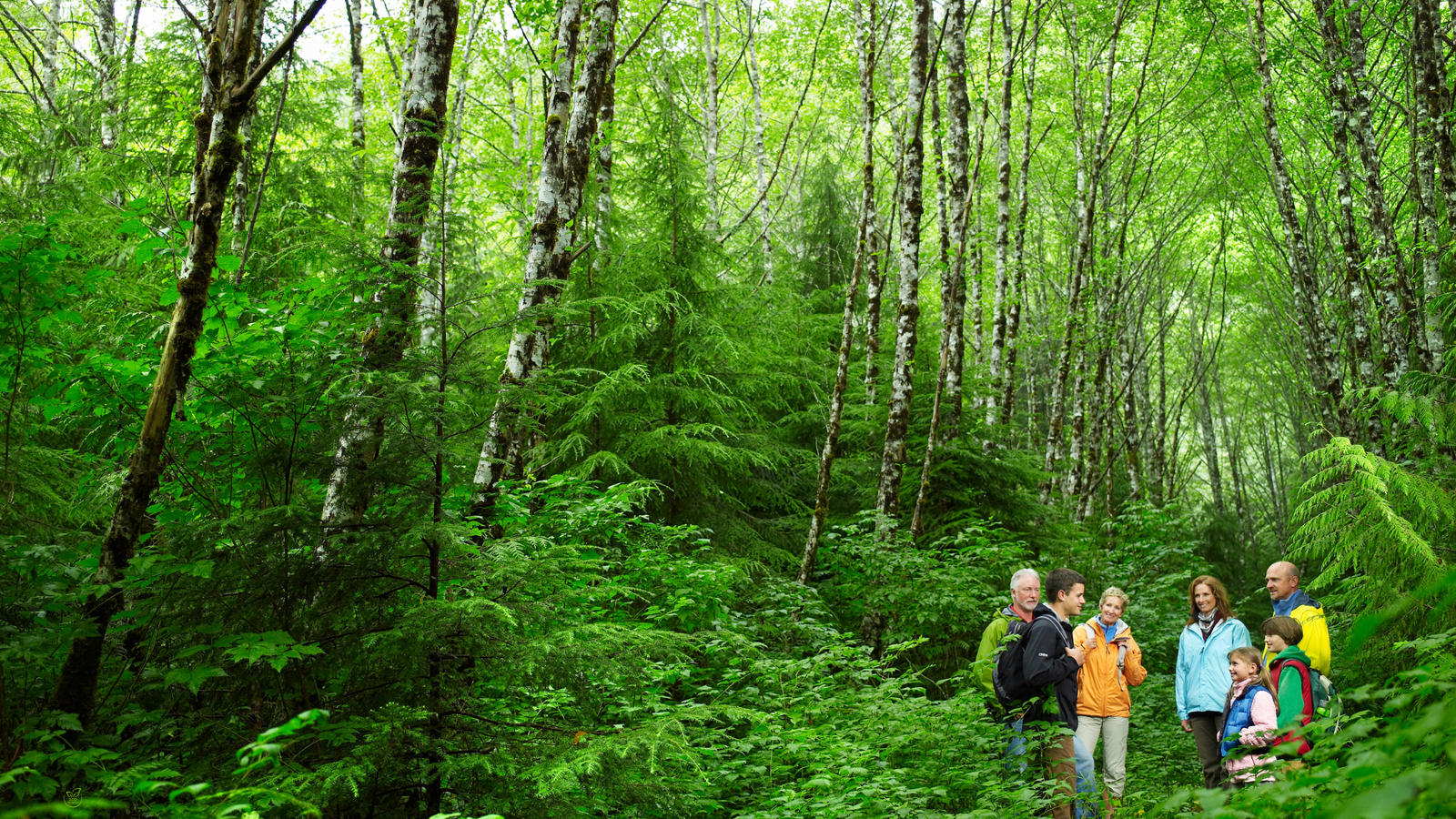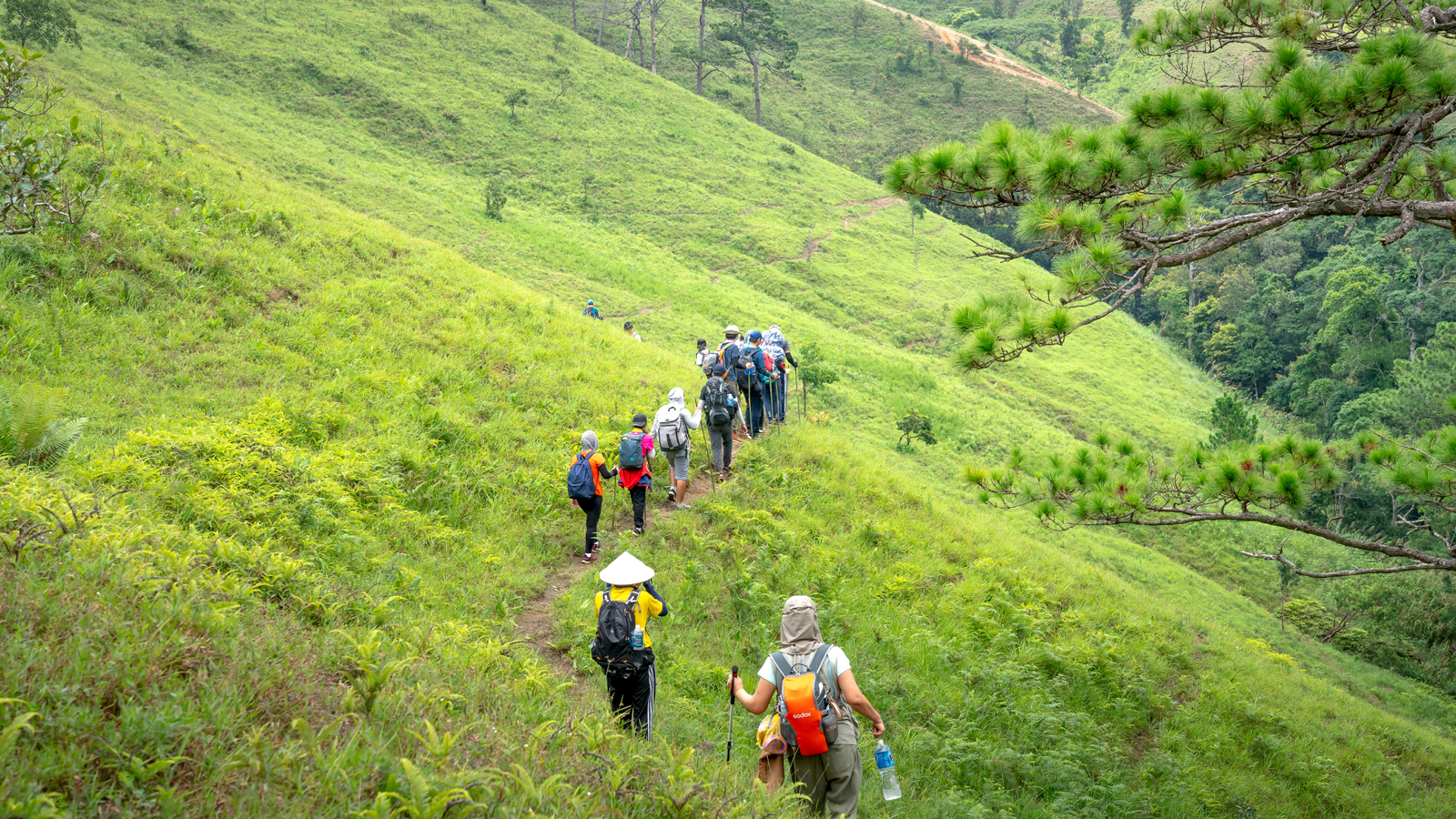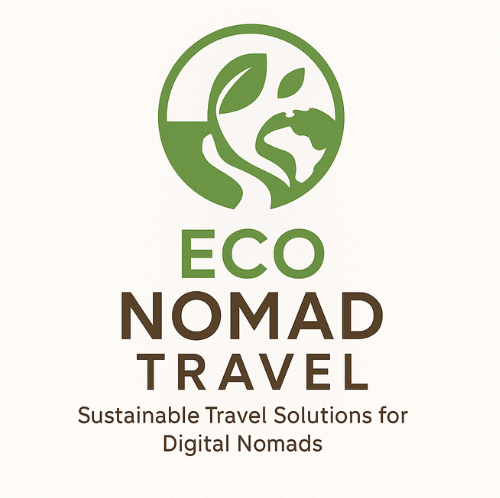How to Choose Eco-Friendly Tour Operators in 2025: Travel With Purpose
Learn how to spot authentic sustainable tours, avoid greenwashing, and ensure your travel choices truly support people and the planet.

As sustainability becomes mainstream, the phrase eco friendly tours appears everywhere — yet not all green claims hold up under scrutiny. In 2025, travelers demand proof that their adventures contribute to conservation, not exploitation. Choosing a responsible operator means understanding transparency, certifications, and community impact. This guide from Eco Nomad Travel breaks down how to evaluate tour companies that walk the talk.
Disclosure: This post contains affiliate links with partners such as Trip.com and Aviasales. Purchases through these links support Eco Nomad Travel’s independent sustainability reporting — at no extra cost to you.
- Look for internationally recognized eco certifications like GSTC or Travelife.
- Ask how your payment supports local guides, conservation, or education.
- Choose small-group tours with transparent carbon accounting.
- Avoid vague “green” language without measurable goals or data.
- Prioritize operators that hire locally and protect cultural heritage.
Understanding What “Eco-Friendly” Really Means
“Eco-friendly” once meant a recycling bin at the lodge. In 2025 it means verifiable sustainability metrics: energy use, waste management, carbon tracking, and local equity. Authentic tour operators design experiences that regenerate landscapes instead of simply reducing harm. Their itineraries often include cultural exchanges, conservation projects, and educational components that empower travelers to act as stewards rather than spectators.
Global Certifications That Matter
Certifications help travelers separate genuine sustainability from marketing fluff. The Global Sustainable Tourism Council (GSTC) sets universal criteria for hotels and tour operators. Other respected labels include Rainforest Alliance Certified, Travelife, and B Corp accreditation. Check if the operator’s certification is active and verifiable on official databases. Transparency signals integrity.
Community First: Local Partnerships & Fair Wages
The heart of an eco friendly tour lies in economic fairness. Operators that employ local guides, buy local produce, and invest in community projects create circular benefits. Look for evidence of fair-trade policies and equitable profit sharing. In Kenya’s Maasai conservancies and Peru’s Sacred Valley, for example, co-owned lodges have become models of community-based tourism.
Transparency, Ethics, and Carbon Accountability
Leading tour companies now publish annual sustainability reports showing emissions per traveler and offset strategies. Carbon-neutral or “climate-positive” programs aren’t marketing buzz — they’re data-driven commitments to regenerative travel. Before booking, ask if your fee includes verified offset projects or renewable-energy contributions.

Experience Design: Education Over Exploitation
True sustainability transforms travel into a classroom. Educational tours that include conservation workshops, citizen-science projects, or cultural immersion create empathy and long-term impact. Avoid any operator offering wildlife interactions or photo ops that disrupt habitats. Choose those who prioritize observation, not interference.
Technology & Tracking in 2025
Modern eco-operators use digital dashboards to measure water use, emissions, and waste reduction. Travelers can view live sustainability metrics via mobile apps — turning transparency into trust. Platforms like Yesim eSIM and Airalo allow digital nomads to stay connected sustainably without plastic SIM waste or paper contracts.
Spotting Greenwashing in Travel Ads
Greenwashing is the plague of the travel industry. Watch for vague language — “eco,” “sustainable,” “authentic” — without proof. True eco friendly tours disclose concrete actions: renewable energy use, conservation partnerships, and third-party audits. When in doubt, cross-reference claims against independent databases or NGO listings.
How to Identify Certified Eco-Friendly Tours That Truly Make a Difference
The best way to avoid greenwashing is to look for clear verification. Real eco friendly tours proudly display their certifications from credible organizations—not vague “eco” logos with no source. Labels like GSTC Certified, Travelife Gold, and Biosphere Responsible Tourism are backed by independent audits and measurable sustainability criteria. These programs evaluate how operators manage waste, conserve water, reduce energy use, and support local economies.
Before booking, visit the company’s website and look for published impact reports. Many responsible tour operators now include annual sustainability updates outlining carbon emissions, biodiversity metrics, and community contributions. A transparent operator won’t hesitate to show data—numbers prove intention. If you’re not sure how to read these reports, our Sustainable Travel Guide 2025 breaks down the main indicators and explains what “eco-certified accommodations” and “responsible travel practices” really mean in measurable terms.
Ask the Right Questions Before You Book
When researching your next trip, ask three simple questions: 1. Does the operator partner with local communities or NGOs? 2. Can they show tangible conservation outcomes from past tours? 3. Do they publish their sustainability goals publicly?
If the answer to any of these is “no,” think twice. True sustainability is transparent. Operators that value community empowerment often provide details about fair wages, gender equality programs, and local education partnerships. For instance, many initiatives featured in Eco-Volunteering & Regenerative Travel 2025 highlight how tourism revenue directly funds coral restoration, wildlife monitoring, and rural entrepreneurship.
Look for Technology and Traceability
Innovation is playing an increasing role in trustworthy tourism. In 2025, several trailblazing operators have adopted blockchain-based traceability to ensure funds reach verified projects. Others use smart sensors in vehicles to monitor emissions or AI route optimization to reduce fuel consumption. These technical advances not only enhance operational efficiency but also provide verifiable proof of impact—critical for maintaining traveler trust.
For digital nomads and long-term travelers, eSIMs like Yesim and Airalo help reduce paper waste and roaming-related carbon costs. Combining digital minimalism with ecological awareness creates a more holistic travel model aligned with the Low Impact Travel Habits framework promoted across the Eco Nomad Travel network.
Trust Operators Who Invest Locally
Local investment remains one of the strongest indicators of authentic ecotourism. The most reputable eco friendly tours ensure that at least half of all revenue stays within the host community. They source materials locally, hire local guides, and design itineraries that highlight indigenous knowledge and cultural heritage. These operators recognize that preserving local wisdom is as important as protecting biodiversity.
If an operator advertises sustainability but lacks details about community involvement, it’s worth asking for clarity. Companies featured in our Top 10 Ecotourism Destinations for 2025 list demonstrate how eco-businesses can succeed ethically by prioritizing transparency and measurable results. When you choose a tour that invests locally, your adventure becomes part of a much bigger restoration story.
How to Book Responsibly
Before confirming a booking, review the operator’s supply chain and group size. Smaller groups minimize impact while enhancing cultural exchange. Whenever possible, travel overland or by train. Compare low-emission routes using Aviasales and find carbon-neutral lodges through Trip.com. Responsible booking isn’t just ethical — it’s more rewarding.
The Future of Ethical Exploration
The next generation of travelers values impact over indulgence. As regenerative tourism matures, expect to see AI-driven route planning that optimizes energy use, biodegradable gear mandates, and blockchain-verified carbon tracking. The more transparent the data, the stronger the trust — ensuring travel truly gives back.
The New Standards of Trust in Eco-Friendly Travel
As sustainable travel matures, the biggest shift in 2025 is toward verifiable trust. Travelers no longer rely on glossy marketing or influencer hashtags—they want transparent data, ethical leadership, and third-party accountability. The most successful eco friendly tours now publish annual impact statements that outline their carbon usage, biodiversity contributions, and community engagement metrics. This evolution represents a profound change: sustainability has become quantifiable.
Organizations like the Global Sustainable Tourism Council (GSTC) and the Adventure Travel Trade Association (ATTA) continue to set international frameworks that separate authentic operators from opportunists. Tour companies seeking long-term relevance increasingly align with the UN Sustainable Development Goals (SDGs), ensuring that every itinerary has measurable social and environmental outcomes. These standards are reshaping how the public perceives responsible tourism, giving travelers new tools to make informed choices.
Case Studies: How the Best Operators Are Raising the Bar
In Costa Rica, the Osa Conservation Alliance channels revenue from rainforest treks directly into wildlife-corridor protection. In Slovenia, cycling and wine routes certified under the Green Scheme of Slovenian Tourism have inspired neighboring countries to adopt circular-economy models for visitor management. These examples illustrate what modern sustainable tourism principles look like when executed honestly: community ownership, environmental stewardship, and long-term planning over short-term profit.
Meanwhile, in Southeast Asia, digital nomads are redefining slow travel. By combining remote work hubs with regenerative volunteering, they form what Eco Nomad Travel calls the low-impact digital nomad lifestyle—a movement that proves productivity and preservation can coexist. Articles such as Sustainable Digital Nomad Lifestyle and Low Impact Travel Habits explore how these habits ripple outward, creating economic resilience for local artisans and guides.
Beyond Green: The Rise of Regenerative Travel Trends
Traditional sustainability aimed to “do less harm.” Regenerative travel flips that equation—it seeks to leave destinations better than they were found. The concept now informs major industry events and university programs worldwide. Forward-thinking tour operators integrate reforestation, coral-reef rebuilding, and cultural revitalization projects into their itineraries. This proactive approach transforms each traveler into a contributor rather than a consumer.
One key differentiator is the collaboration between travelers and scientists. Citizen-science tours let participants collect climate data, photograph species for biodiversity mapping, or test water quality in fragile marine zones. By merging exploration with evidence-based impact, these journeys satisfy both adventure seekers and data-driven conservationists. It’s travel as participatory research.
Responsible Travel Practices for Everyday Explorers
Even if you’re not joining a field expedition, small behavioral changes compound across the industry. Choose eco-certified accommodations, avoid single-use plastics, and respect local customs. Use digital boarding passes, pack reef-safe sunscreen, and prioritize local meals over imported goods. These micro-choices, scaled globally, reduce tourism’s footprint by millions of tons of CO₂ annually.
Travelers can also integrate Eco-Friendly Travel Tips into their planning routine: opt for public transport, support fair-trade souvenirs, and book directly with community-run lodges. Transparency and humility go hand-in-hand—ask operators how they measure success, and reward those willing to share honest numbers.
Digital Transparency and Storytelling for Accountability
The new wave of ethical travel marketing is data-backed storytelling. Verified operators use QR-coded sustainability reports, blockchain-based carbon ledgers, and live dashboards to show travelers where funds go. This innovation merges authenticity with interactivity, boosting user engagement and SEO visibility simultaneously. Google’s algorithms favor depth, originality, and author transparency—qualities your brand already embodies.
For bloggers and creators documenting these experiences, remember that EEAT thrives on first-hand narratives. Mention the names of local guides, describe tangible sensory details, and include geotagged photos. These human signals tell both readers and search engines that the content comes from lived experience, not recycled stock information. That authenticity translates directly into higher rankings and longer on-page time.
Building a Trust-Based Future for Sustainable Tourism
By 2030, the expectation is clear: sustainability will no longer be a marketing edge—it will be the cost of entry. The operators who thrive will be those who integrate measurable ethics into every facet of their business. Travelers, in turn, will act as auditors, advocates, and storytellers. Together they form an ecosystem where responsible travel practices, community-based conservation, and ethical travel choices 2025 evolve into the global norm.
Eco Nomad Travel continues to highlight these pioneers because they prove that tourism can be both transformative and transparent. Explore deeper through our cornerstone guide What Is Ecotourism? The 2025 Guide to Sustainable Exploration and the complementary listicle Top 10 Ecotourism Destinations for 2025. Each resource connects you to credible initiatives shaping the future of sustainable exploration.
In the end, choosing the right operator is about more than checking a certification box—it’s about aligning your journey with your values. When travelers demand evidence, businesses evolve. When exploration becomes empathy, the planet benefits. That’s the quiet revolution behind every truly eco friendly tour.
Expanding Your Responsible Travel Knowledge
Once you’ve mastered how to evaluate tour operators, the next step is understanding the bigger picture. Our guide What Is Ecotourism? The 2025 Guide to Sustainable Exploration breaks down the philosophy behind modern sustainable travel, while What Makes a Tour Truly Sustainable? explores how carbon tracking, local partnerships, and community funding turn ideals into measurable impact.
To see these principles in action, explore our Top 10 Ecotourism Destinations for 2025 — each destination proving that sustainability and adventure can thrive together. For comparison, Ecotourism vs Regular Tourism highlights how intention and accountability separate regenerative travel from conventional tourism models.
For a broader global perspective on certified sustainability standards, visit the Global Sustainable Tourism Council (GSTC), which sets internationally recognized criteria for responsible tourism management. Referencing their framework ensures your next adventure aligns with the world’s leading environmental benchmarks.
Related Reading: Build a Fully Sustainable Itinerary
Eco-Friendly Tour Operators — Frequently Asked Questions
Understanding & Choosing Responsibly
1. What defines an eco-friendly tour operator?
One that minimizes environmental impact, empowers local communities, and maintains transparency in its sustainability practices.
2. How do I verify an operator’s green claims?
Check certifications such as GSTC, Travelife, or Rainforest Alliance, and request measurable impact reports or independent audits.
3. Are eco-tours more expensive?
Not necessarily. Many community-owned operators offer competitive pricing while reinvesting profits into conservation and education.
4. What is regenerative tourism?
A model that actively restores ecosystems and communities, going beyond sustainability to leave destinations better than before.
5. How can I offset my carbon footprint when traveling?
Use verified offset platforms or book with companies that include certified carbon-neutral programs as part of your trip cost.
Technology, Impact & Ethics
6. Do eco-tour companies use technology for sustainability?
Yes. Many use digital dashboards to track resource use, AI route optimization to reduce fuel, and blockchain to verify emissions data.
7. How can digital nomads find responsible operators?
Search for eco-certified co-working retreats or long-stay programs that partner with local NGOs and publish transparent sustainability metrics.
8. What are warning signs of greenwashing?
Generic eco-buzzwords without proof, lack of certification, or wildlife encounters that disturb natural habitats are clear red flags.
9. Which destinations lead in eco-tour innovation?
Costa Rica, Norway, Bhutan, and Slovenia consistently rank as global leaders for verified eco-tourism standards.
10. How can travelers support conservation beyond booking?
Donate to local NGOs, join citizen-science or reforestation projects, and share trustworthy resources that inspire responsible travel.

